Advertiser Disclosure: I Will Teach You To Be Rich has partnered with CardRatings for our coverage of credit card products. I Will Teach You To Be Rich and CardRatings may receive a commission from card issuers.
Editorial Disclosure: Opinions, reviews, analyses & recommendations are the author’s alone, and have not been reviewed, endorsed or approved by any of these entities.
I’m not using credit cards just to maximize travel points on every penny I spend.
Some people love that stuff. I am not one of those people.
I want to get a few cards, have a few simple rules on when to use each, maximize my points with minimum effort, and get back to living my Rich Life. I have zero interest in trying to maximize every cent from any given point I earn.
Featured Travel Card – Chase Sapphire Preferred

Go get the Chase Sapphire Preferred. Seriously, it’s amazing. Learn More.
So I’m not going to teach you how to try and get 300 nights/year worth of free hotel rooms by using 38 different cards.
What I can promise you is that by the end of this post, you’ll have a simple rewards machine that racks up points for you while giving you a ton of perks. All without having to think about it.
It all comes down to picking the right 2-3 cards for you. You should pick one solid card in each of these categories:
- General travel credit card
- Airline credit card
- Hotel credit card (optional)
Before we go any further, I assume you travel at least once per year or aspire to.
If you hate traveling, don’t get a travel credit card. All the points and perks are designed around folks that travel regularly. If you don’t travel, you’re better off getting a cash back credit card.
I’m also going to assume that you’ve already made the commitment to choose a travel rewards card over a cash back card. We go into detail on the difference between the two in our review of the best rewards credit card. Basically, get a travel rewards card if you want to maximize the value of your rewards program. And if you want to maximize simplicity, get a cash back card.
Travel credit cards do take a bit more effort, and in return you’ll get a ton of amazing perks while traveling.
Let’s start with the top 12 best travel cards for 2020 and how we selected them.
The Top 12 Best Travel Credit Cards for 2020
- Chase Sapphire Reserve
- Chase Sapphire Preferred
- American Express Platinum
- United Explorer Card
- Gold Delta SkyMiles
- Platinum Delta SkyMiles
- Delta Reserve
- Citi / AAdvantage Platinum Select World Elite Mastercard
- Citi / AAdvantage Executive World Elite Mastercard
- Marriott Bonvoy Boundless Credit Card
- Hilton Honors Aspire Card
- The World of Hyatt Credit Card
When selecting cards, we used these factors:
Bonus value
Just about every card offers a bonus of some kind. For the cards that you sign up for, make sure to get the bonus if they offer one. Then move on to more important things.
In the long term, the exact bonus is a minor benefit. I never choose a card based on the bonus. Also keep in mind that the values of each “point” are slightly different depending on the card. That means a card offering a 60,000-point sign-up bonus isn’t necessarily better than a card offering a 50,000 bonus. Don’t let it worry you that much.
Points system
Depending on the travel card, the points system either matters a lot or it’s a minor consideration.
For your general travel card that serves as the hub of your points machine, the majority of the value comes from the card’s point system. So pay very close attention. You want a points system that aligns with your spending so you get as many bonus points as possible.
For airline and hotel cards that are more about the perks, the point system is a smaller consideration.
Fees
To get a decent travel credit card, you’ll need to accept a $95 annual fee at least. You’ll easily make this up with value of the points.
The really nice perks don’t open up until the annual fee hits $450. All the “high roller” cards with amazing perks are in this range.
For travel cards, annual fees are standard. It’s the price we pay to get more points and sweet perks.
Make sure to get travel cards that don’t have foreign transaction fees. These fees will add 1-3% to the total cost of any traveling that you do. That’s ridiculous, since there are plenty of amazing travel cards that don’t have any foreign transaction fees. Don’t accept this fee on any card.
Perks
Perks are where the travel credit cards really shine. Especially at the higher tiers, the primary selling point is the extra perks you get.
Lounge access, free hotel nights, companion fares, Uber credits, the list goes on.
Perks are the main reason to consider multiple travel credit cards. And the perks are awesome enough that it’s worth getting 2-3 cards in order to stack a bunch of perks.
Convenience factors
For travel credit cards, there are two convenience factors to watch for:
- Keep credit cards within the same bank as your other accounts when possible. Having several dozen bank logins gets to be a real pain. So if you’re trying to decide between two cards, choosing the card at the bank you already use keeps things simple.
- Try to avoid getting only American Express cards. Some places don’t accept them, especially internationally. You want at least one solid Visa or Mastercard as a backup.
Each of these will depend on your specific circumstances.
Bank reputation
It’s no secret that we hate big banks at I Will Teach You to Be Rich, especially Wells Fargo. For decades, they have aggressively charged their customers ridiculous fees and have been involved in multiple scandals.
Their reputation is so bad that I didn’t even consider their cards.
Chase tends to be the exception. While it’s a big bank, it has a much better reputation than its peers. Some of our favorite cards are from Chase.
General travel credit cards
My main recommendation: start with one general travel credit card.
This will be your primary spending card that you rack up the most points on. Consider it the “hub” of your points systems. Most of your points will sit on this card until you’re ready to spend them.
I prioritize my “general” card for most of my spending so that I have as much flexibility as possible with my points. Maybe I want to blow hundreds of thousands of points on a stay at the St. Regis. Or maybe I want a specific first-class seat on a Cathay Pacific flight. I could also string together a few flights for an “around-the-world” trip.
Whatever the goal, I strongly prefer having a points program “hub” that allows me to transfer points into other programs so I have complete flexibility.
Before considering specific cards for airlines or hotels, get one all-purpose card.
Chase Sapphire Reserve
The best overall travel credit card
Go get the Chase Sapphire Reserve card. Seriously, it’s amazing.
If you’re looking for the single “best” travel credit card and don’t want to put any more thought into it, get this card and be done with it.
It has great points categories with 3X on all travel and restaurants, a travel statement credit, another credit for Global Entry or TSA Precheck, no foreign transaction fees, and one of the most flexible point transfer programs out there.
The major downside is the $450 annual fee. If you make over $100,000 per year, get the card. With the $300 travel credit, the annual fee is really just $150.
Also, keep an eye on the airline partners that are part of the Chase points program. They currently include British Airways, Flying Blue, JetBlue, Singapore Airlines, Southwest, United, Virgin Atlantic, Aer Lingus, and Iberia. The Chase travel portal lets you book flights on any airline, but those are the only miles programs that you can transfer your Chase points into. If you primarily fly Delta, it’s worth considering the American Express Platinum to make your point redemption on flights easier.
*Terms apply – Learn how to apply online.
If the annual fee is a stretch for you, consider our next recommendation instead.
Chase Sapphire Preferred
The best travel card with an annual fee that’s less than $100
The Chase Sapphire Preferred is very similar to the Sapphire Reserve, with two main differences:
- You’ll collect fewer points and won’t have as many perks
- The annual fee is $95 instead of $450
2X points on all travel and restaurants is still amazing. Plus there’s no foreign transaction fees. And you still get access to the same flexible points program.
*Terms apply – Learn how to apply online.
American Express Platinum
The best travel card for going all-out on perks
If you want to be the VIP and maximize your perks, get the American Express Platinum.
You get Uber statement credits, airline statement credits, and 5X points on flights and hotels booked through American Express Travel. It also has access to the American Express Fine Hotels & Resorts program, which I use for room upgrades, late checkouts, and free spa treatments.
The standout perk is getting access to the Centurion and American Express airport lounges. They’re super nice. The downside is that they’re only in 18 airports. So if you happen to fly through one of these airports regularly, this alone makes the card worth it. It also gets you access to Delta lounges. While there is Lufthansa lounge access, it’s only from Munich and Frankfurt.
If I flew Delta as my primary airline, I’d get the American Express Platinum so I could easily transfer my American Express points to Delta miles and redeem them as international flights.
*Terms apply – Learn how to apply online.
Airline travel cards
After you’ve gotten comfortable with your general travel credit card, it’s time to add a level to your points system.
A dedicated airline card gets you a bunch of perks not available on any other cards. A few of them are easily worth the cost of having an extra credit card.
I resisted this for years. I liked the simplicity of only having to manage a single card. After I finally got an airline card, I wish I had done it years earlier.
Every airline has a slightly different set of perks. Hopefully your primary airline gives you the perks that you care most about. For me, I love priority boarding and lounge access. The perks tend to include:
- Free checked bags
- Priority boarding
- Companion fares (a second ticket on the same flight for a crazy low price)
- Lounge access or discounts on lounge passes
- Extra points when booking directly through the airline
- Miles boosts or extra qualifying miles for program tiers
We won’t be using the airline card to maximize miles. Sure, we’ll get a few extra miles but that’s not our primary goal. Our goal is to get extra perks when we do fly.
How to pick the right airline credit card
Before we pick a card, we first need to pick our primary airline. I recommend committing to one of these three airlines as your primary airline:
- United
- Delta
- American Airlines
Why only these three?
When managing airline miles, you also want an airline that’s part of one of the three major airline networks:
- Star Alliance (United)
- Oneworld (American Airlines)
- SkyTeam (Delta)
Each network has a dozen or so different airline members. For networks within the same airline, it’s easy to book flights across the network and use your airline miles. Flights on partner airlines also usually accrue miles that end up on your main miles program.
Why does any of this matter?
When you want to redeem your miles, you’ll want to use them on international flights. Unless you absolutely need to, avoid spending miles on domestic flights. You’ll get more value from your points on international flights. Plus you get a sweet international trip out of the deal.
And if you’re flying internationally, your options will be confined to the airlines in the same network as your primary miles program. For example, I can’t easily use my United miles to book a ticket on a British Airways flight, since they’re part of different networks.
This is why I never considered the JetBlue or Southwest Airlines miles programs or their credit cards. I know folks who absolutely love both airlines, but not having international flight partners is a deal breaker for me.
Alaska Airlines is the major main exception to all this.
While they’re not part of any of the airline networks, they do have a lot of airlines that they’ve partnered with, like British Airways, Qantas, Cathay Pacific, Emirates, and more. So if there’s a specific airline you really want, check their partner list. It is possible they’ve put together a network themselves.
So how do we pick between United, Delta, and American Airlines?
Honestly, you won’t have much choice in the matter unless you happen to live next to a major airport with a ton of airlines.
Most airports have 1-2 dominant airlines.
I happen to live in Seattle, so Delta is my best choice out of the three.
Why should you prioritize the largest airline at your airport? I do it in order to get the most direct flights possible. I’ll do anything for a direct flight. To me, every extra layover is another chance for something to go horribly wrong.
Years ago, I was traveling between Denver, CO, and Richmond, VA, regularly on Delta. All my flights went through Cincinnati, one of the major hubs for Delta.
On two trips back-to-back, I got delayed overnight. The first was a massive blizzard that hit Denver, the second was a plane malfunction on the last flight of the night. I almost got stranded for the third time in a row when my first flight was delayed and I missed my connection. I sprinted through several terminals and outran several other passengers for the same flight, managing to grab the last seat on the last flight.
Since then, I only consider flights with the fewest connections possible.
That’s why I pick the airline with the most flights out of my home airport. If you want to use another, go for it. Just pick one airline to prioritize over all the others.
Once you pick your primary airline, then it’s time to pick your card. Each airline tends to have 2-3 credit card options. The higher the annual fee you accept, the more perks you’ll get.
Remember that we’re not using our airline credit card to optimize points. We’ll get a few extra points when booking our flights with that card, but that’ll pale in comparison to all the points our general travel card generates. We want the card that’ll give us the best perks.
If the annual fee is worth the perks for you, get the card.
Here are your options.
United Explorer Card
The Chase United Explorer card is a solid entry-level perks card for United flyers.
You’ll get your first bag checked free, priority boarding, and 2 lounge passes per year. There’s also a Global Entry or TSA Precheck credit if your primary card doesn’t already have it.
I find that the 2 lounge passes per year is more than enough for most folks. While it’s nice to have lounge access at your home airport, it’s not a game changer since we control when we get to the airport for our first flight. We really need lounge access when getting stuck with 3+ hour layovers on bigger international trips. I did have to wait in Montreal for 8 hours when coming back to the U.S. from Brussels. I sure wish I had lounge access then.
Two passes to the United lounge is enough to cover most traveling for a year.
*Terms apply – Learn how to apply online.
Gold Delta SkyMiles
A good entry-level Delta card at $95/year is the Gold Delta SkyMiles card. You’ll get three main perks:
- First checked bag free
- Priority boarding
- Delta Sky Club access for $29/person for you and up to 2 guests. While this isn’t as nice as the 2 free passes per year on the United card, it’s a great rate in a pinch. If you and your family get stranded, you’ll be able to hide out in the Delta lounge without handing over your first-born in payment
The perks aren’t epic but they include all the standard stuff at this tier. The card is definitely a great deal at $95/year.
*Terms apply – Learn how to apply online.
Platinum Delta SkyMiles
The Platinum Delta SkyMiles card is the “in-betweener” card for Delta travelers at $195/year.
It’s almost identical to the Gold Delta SkyMiles with the addition of an annual companion fare. In other words, someone can travel with you basically for free. You’ll have to pay taxes, the flight must be domestic, and you get your first companion fare after your first card renewal.
The vast majority of domestic flights exceed $100, so as long as you do one domestic trip per year with someone else, you’ll easily come out ahead on this card.
If you’re a Delta flyer and you’re planning on signing up with the Gold Delta SkyMiles card, you should get the Platinum Delta SkyMiles instead. It’s a better deal.
*Terms apply – Learn how to apply online.
Delta Reserve Credit Card
The Delta Reserve card is the “VIP” Delta card at a $450/year annual fee.
This includes everything from the Platinum Delta SkyMiles, with a few extras:
- Full Delta Sky Club access for you, $29/person for up to 2 guests
- A miles boost when you spend $30,000 within any given calendar year. You’ll receive 15,000 bonus miles and 15,000 Medallion Qualification Miles
- Upgrade priority
Like the other airline cards, the major advantage is full access to the airline’s lounge. If that’s worth the $450/year fee to you, get the card. If not, get the Platinum Delta SkyMiles card instead.
*Terms apply – Learn how to apply online.
CitiBusiness / AAdvantage Platinum Select World Elite Mastercard
Pretty standard offering for American Airlines flyers. For a $99 annual fee, you’ll get the first checked bag for free and “preferred” boarding on American Airlines and 2X miles at gas stations and restaurants.
The flight discount is pretty nice. As long as you average $1,700 per month in credit card spending, you’ll hit the $20,000 milestone each year. Then you’ll get a discount that more than covers your annual fee.
The 2X miles on restaurants and gas stations is nice too in case your general travel card doesn’t give 2X points or more on these spending categories.
*Terms apply – Learn how to apply online.
Citi / AAdvantage Executive World Elite Mastercard
The Citi / AAdvantage Executive World Elite Mastercard has a similar set of VIP perks as the other airlines for an annual fee of $450:
Unfortunately, the Executive World Elite does lose a few perks that the Platinum Select World Elite has. The 2X miles at gas stations and restaurants aren’t available on this card. That’s lame. But that’s the cost of getting American Airlines lounge access.
Like the other airline cards, only get this card if lounge access is worth the $450 annual fee to you. Otherwise get the Citi / AAdvantage Platinum Select World Elite Mastercard if American Airlines is your primary airline.
*Terms apply – Learn how to apply online.
How to use your airline card
Since this is the second credit card that we have, we’ll want to follow a few simple rules to get the most out of it.
- Set up a few monthly subscriptions on the card so there’s always active charges on the account. This will keep the bank from marking your account as inactive in case you go a long time without using it. A Netflix subscription is perfect.
- Set up automatic payments. Since you won’t be using the card heavily, it’ll be easy to forget about it. The last thing we ever want is to miss a credit card payment. We’ll get screwed on fees and it’ll ruin our credit score for years. Automatic payments ensure that this won’t happen.
- When booking a flight on your primary airline, use the card to book the flight. All the airline cards give more points when booking directly through them.
That’s it, you’ll now get great perks while flying.
Hotel travel cards
In general, I’m not a huge fan of hotel travel cards for one reason.
I almost never stay in the same hotel twice.
Even when I return to a city, I almost always try a different hotel. Or I grab an Airbnb that I’ve never used before.
When I travel, even for work, I love trying new things. New neighborhoods, new food, new everything. One of my favorite things is discovering something amazing that I never knew existed.
One of the ways that I get my “new” fix is by trying new hotels. Occasionally, I’ll find a hotel that completely blows my mind, like The Peninsula Beijing or 1 Hotel Central Park. In those cases, I love going back. But it doesn’t happen often.
Where airlines only have a few options and you don’t lose that much flexibility by prioritizing a single airline, you’ll lose a ton of flexibility by only staying in one hotel chain. And the hotels I tend to love are unique, small chains. I have no personal interest in staying at dozens of Marriotts across the world.
But maybe you’re in a different situation. Maybe you travel for business all the time and stay at the same hotels. Or maybe you prefer the consistency from staying at the same hotel chain.
In that case, you should have a hotel credit card.
The choice will be pretty simple too: get the card for the hotel chain that you want to use.
If you’re not sure or have flexibility, go with one of the Marriott Bonvoy cards. You get access to W, St. Regis, and The Ritz-Carlton hotels, which are all super nice. And it includes tons of perks. If I was going to get a hotel card myself, I’d get this one.
Marriott Bonvoy Boundless Credit Card from Chase
The free night award is the most straightforward benefit on the Marriott Bonvoy Boundless Credit Card from Chase, and easily covers the $95 annual fee.
Otherwise, think of this card as a booster to climbing up the rewards tiers at Marriott. Here’s how many nights you need to spend in Marriott hotels per year to qualify for the different tiers:
- Member = 0 nights
- Silver Elite = 10 nights
- Gold Elite = 25 nights
- Platinum Elite = 50 nights
- Titanium Elite = 75 nights
- Ambassador Elite = 100 nights and $20,000 in annual spending
The higher you go up the tiers, the more perks you get. Everything from bonus points during your stay, faster internet, late checkout, welcome gifts, and room upgrades. The higher your tier, the more perks you get.
The Marriott Bonvoy Boundless Credit Card starts you at Silver Elite status, which includes 10% bonus on points during your stay along with priority late checkout. And with the 15 Elite Night credits, you have a head start on hitting the higher tiers that have increasingly better perks.
That makes it a lot easier to hit whichever status tier that you’re going for.
*Terms apply – Learn how to apply online.
Other hotel credit cards
If you want to use other hotel chains, these are the major options to consider.
Hilton Honors Aspire Card

This is the primo Hilton credit card. It’s a fantastic deal for two reasons.
First, the $250 resort credit knocks the annual cost of this card down to $200. Then the free night per year easily takes care of the rest. As long as you stay at a Hilton hotel once per year, you basically get the card for free.
Second, you also get Diamond status, which is Hilton’s highest rewards tier. It’s the only card that gives status at the highest tier for any hotel membership program. You’ll get:
- Free room upgrades
- 5th night free on reservations
- Late checkout
- Welcome gifts
- Complimentary breakfast
In other words, getting the Hilton Honors Credit Card gets you all the perks that come with Diamond Status, and it’s basically free once you factor in the statement credit and free night.
If you enjoy Hilton hotels and want to load up on as many perks as possible without the least amount of effort, this is a fantastic way to do it. There’s no hotel status tier to manage. Just book your hotel and walk in like a baller. Then rack up points to splurge on Hilton properties around the world.
This card’s good enough that even I’m considering staying at more Hilton hotels.
*Terms apply – Learn how to apply online.
The World of Hyatt Credit Card
The World of Hyatt credit card is a comparable hotel card to the other options. You’ll get a free night each year, free status in the middle of the hotel membership tiers, night credits to get higher tiers, and tons of bonus points when staying at Hyatt hotels.
There’s nothing that makes this card superior to the other hotel credit cards. But it’s a great option if you prefer Hyatt hotels.
*Terms apply – Learn how to apply online.
To wrap things up here are our picks for the top 12 best travel credit cards for 2020. Check them all out and find the best travel card for you.
Top 12 Best Travel Credit Cards
- Chase Sapphire Reserve
- Chase Sapphire Preferred
- American Express Platinum
- United Explorer Card
- Gold Delta SkyMiles
- Platinum Delta SkyMiles
- Delta Reserve
- Citi / AAdvantage Platinum Select World Elite Mastercard
- Citi / AAdvantage Executive World Elite Mastercard
- Marriott Bonvoy Boundless Credit Card
- Hilton Honors Aspire Card
- The World of Hyatt Credit Card
Advertiser Disclosure: I Will Teach You To Be Rich has partnered with CardRatings for our coverage of credit card products. I Will Teach You To Be Rich and CardRatings may receive a commission from card issuers.
The best travel credit cards for 2020 is a post from: I Will Teach You To Be Rich.
Via Finance http://www.rssmix.com/
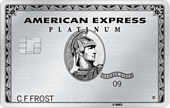

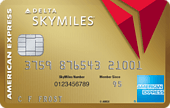

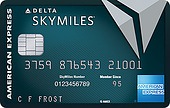
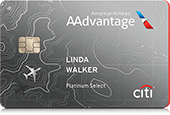
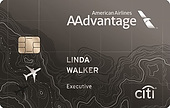
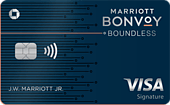
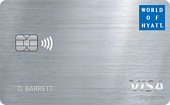
No comments:
Post a Comment